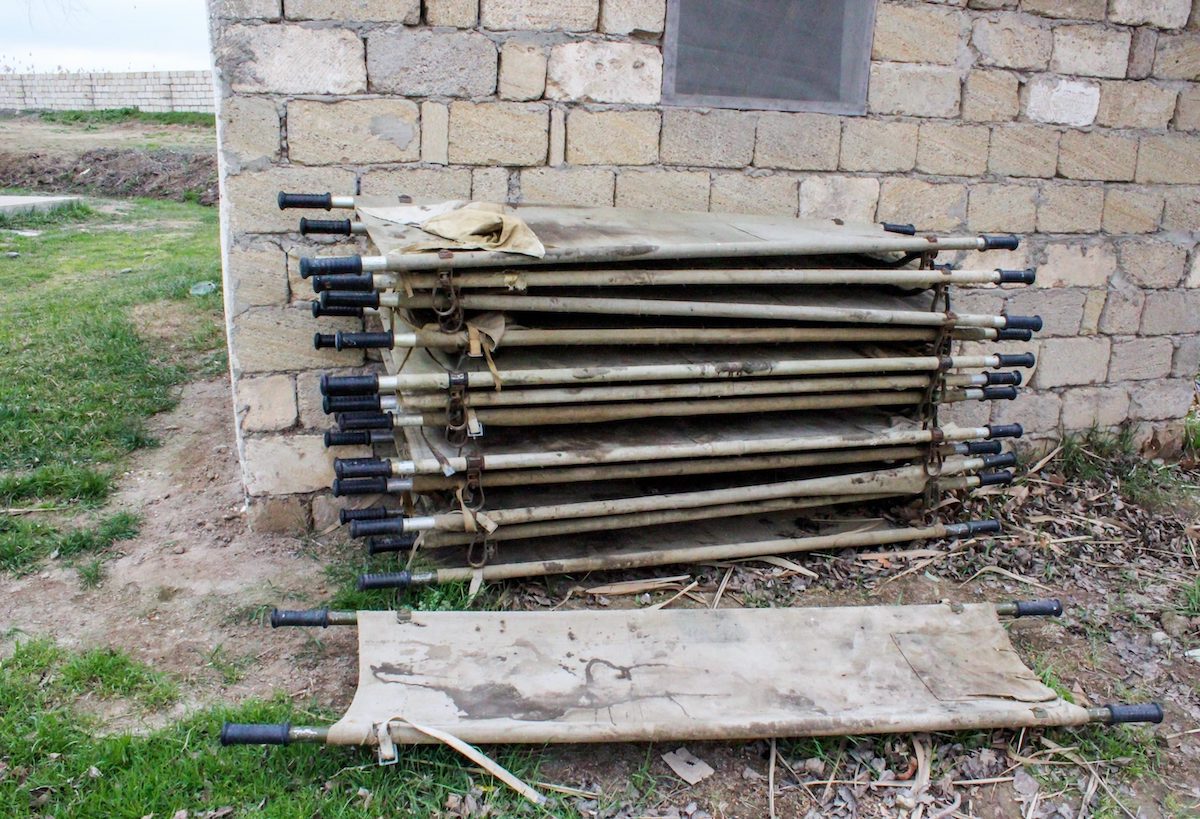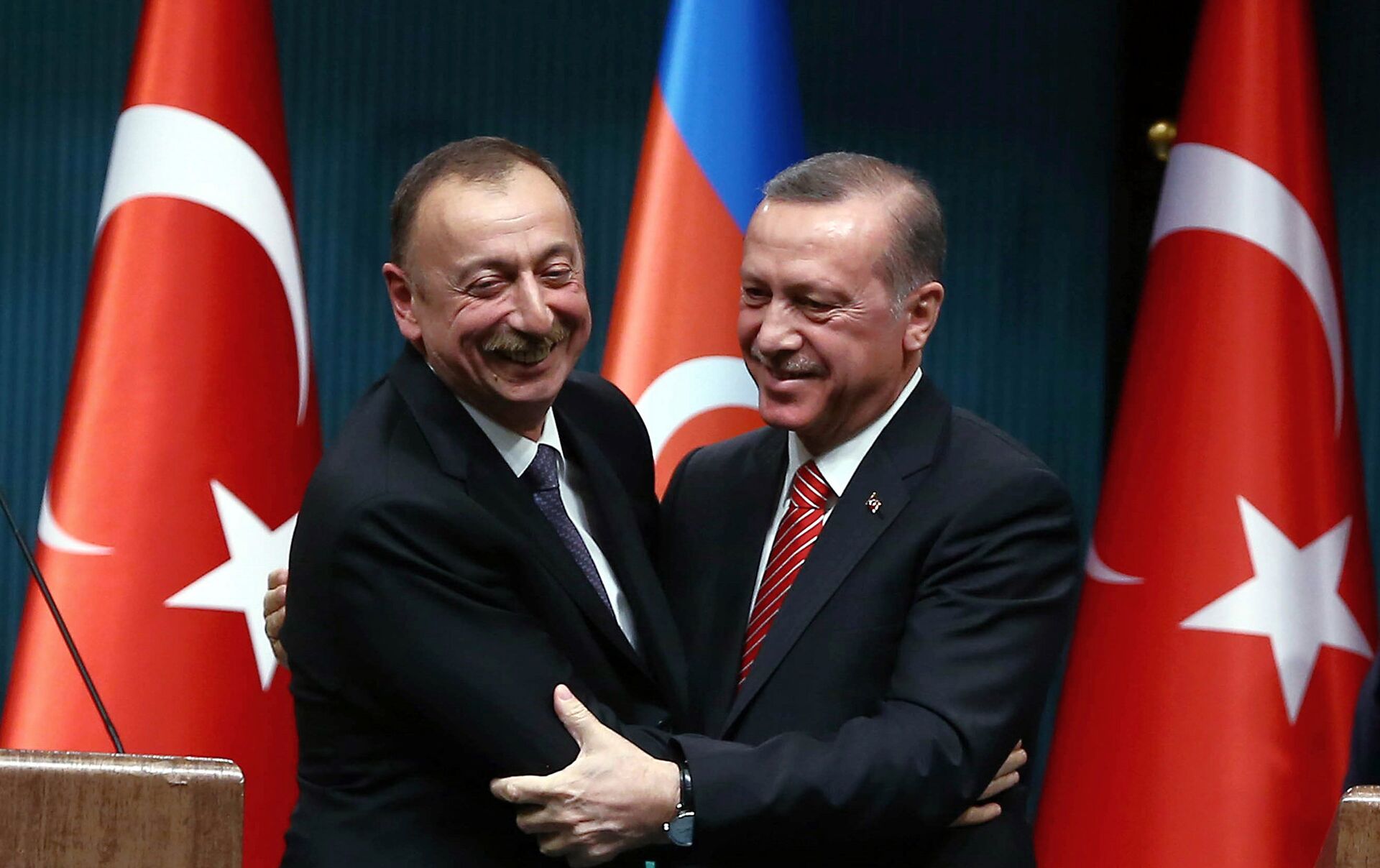"They took upon themselves the pain of young people's deaths" - imams as bearers of the trauma of war
Imams and traumas of the 44-day war. This article is the first in a new series aimed at understanding collective trauma, its impact on society and on conflict dynamics. In this article, we look at Azerbaijani society and the role that imams play in carrying the burden of collective trauma. Original on the IndiePeace website.

Few people realise the heavy emotional burden shouldered by imams during the 44-day war of 2020, and few know how much they still have to bear, to this day. No one has worked with them, no one is aware of their feelings, and no one knows how they deal with the memories of the terrible events they witnessed.
The imams not only observed those tragedies, they were actively involved in dealing with them. Doing all they could to protect their society from the terrors of war, they did their best to comfort parents who had lost their sons. One could say that they took on the excruciating pain of the deaths of many young men. The imams believe this was their mission. They knew they were working to protect people from something people may not have been able to bear or accept – the bloody reality of war.
Today, just as before, the imams work with their societies, fulfilling their mission, preaching. No one knows the horrors they live with in their minds. Is this because society does not really want to know, or because imams feel they must still keep the tragedy of war to themselves to protect others? It is hard to say. So how does war trauma evolve in peaceful times, and how is these people’s experience of war reflected in their everyday work?
Imams had to witness the harshest realities of war. Such experiences can destroy one both physically and psychologically. Imams had to send men to war, and to receive the bodies of those who had died in order to give them the last rites. They also had to work with the dead men’s relatives. This work could not be called a formal task as it was so emotional. Imams felt the families’ pain, they took in into themselves.
For many imams, this was their first experience of war. Others, however, had already witnessed something similar in the First Nagorno-Karabakh War.
There were days when imams had to receive and wash some thirty or forty soldiers’ bodies in a single day. After medical examinations and DNA tests, the bodies were sent to mosques, so the men could be buried in accordance with their religion.
- “Heroes don’t hurt”: why war veterans don’t seek mental health help
- “They don’t care about us” – Karabakh war veterans seek more support from Baku
- Heroization and stigma: Psychological problems faced by war veterans in Armenia
- “We honor the memory of victims on both sides of the conflict” – Georgian NGOs on the war in Abkhazia
A burden not all could bear
One imam from Beylagan district recalls:
“That was my first experience. I was frightened, I didn’t even want to go up to them. But the friend I was with, was more experienced. He helped me. He explained to me that martyrdom is the greatest, holiest achievement, and I overcame my fear. From then on, I did that work for 44 days.”
The imams shouldered not only the tragedy of all those deaths, but the heavy task of communicating them to families.
“Telling parents their son died a shehid (martyr’s) death is horrible. Who would want to take on a burden like that? And how do you say it? Sometimes you get parents who have no idea that their son’s body is about to be brought back to the house he was born in, so he can set off on his final journey. Someone has to tell the families this sad news. Often, the body was already on its way to them.”
“I would cry together with the parents. I’d beg them not to look. I’d always do everything I could to make sure parents never saw their sons looking like that. I would tell them to remember them, the way they’d looked when they’d left. We protected the dignity of our shehids.”
The man who brings bad news
In Lankaran district, the imam at a local mosque shared one of his memories:
“I was meant to tell a family about the death of their son. On my way to their house, I met a man and told him what had happened. I asked him not to tell the father that his son had become a shehid – I said we would tell them ourselves when the body arrived. As soon as I told him the father’s name though, he stumbled and fainted. I managed to catch him as he fell, and held him. Later I found out that he was the father of the dead man.”
He tells us that locals in the area came to see him as the bearer of bad news.
“I didn’t want to have to tell families about the shehids. I hated myself. Bringing news of a death is very hard. But at that time, that was our mission.”
Recalling the war, the imam of a mosque in Barda told us scenes from those times often rise up in his memory. He witnessed human suffering from the outset of the First Karabakh War, and saw it again during the more recent hostilities. Today, he just hopes we will never again have to observe or live through such horrors. He talked to us for a long time, speaking slowly. His words were full of pain. At one point, after a long pause, he clearly resolved to tell us about the happening which made the greatest impression on him.
“At midnight, they brought in the bodies. We would prepare to place them in the morgue. One night, one of the lads said that one of the bodies was still warm, and he could just about feel a pulse. Another went to check, and said the same.
We rushed that soldier to the hospital. The doctors put him on life support, and he responded. The lads came back crowing ‘He’s alive! He’s alive!’ In the morning, the children in the street were also shouting ‘He’s alive!’ I went to visit him in the hospital, the doctor said he was going to be ok. I was so happy. I would often ask for updates on his state as I waited for him to regain consciousness.
But then one day, the nurse said he had opened his eyes, looked around the room, and then closed his eyes again, this time for evermore.”
The imam’s voice falters, his eyes turn red. He tries not to weep, but the tears come streaming down his cheeks.
The hardest task is to console the parents
This is a special task. No one can ever be fully equipped for it, not even the imams. An imam from Tartar district begins to share his heavy thoughts. His eyes fill with tears, there is a lump in this throat.
“It is very hard to console the parents of the shehid. The holiest, most precious words in the world are powerless to take away their pain. We would often not let parents see their sons’ bodies – sometimes one has the strength to resist even parents’ final wish to see their child’s body.
You have to gather all your strength, all your being, in order to refuse their request. We remember the departed differently – we recall their pleasant faces, their laughter. It is then that a smile might bring our eyes to life. I would not allow a father for the rest of his life to have to remember his son looking as I had seen him.”
Imams after the war
War leaves its mark on everyone, and the imams of Azerbaijan are no exception. Today, they are still working with their societies. But one of them admitted to us that the mothers of dead soldiers often appear in his dreams. Talking to them, he says, was far harder for him than seeing the bodies of the dead soldiers.
Another imam revealed that since the war, he has been hugging his son more often. He often thinks about the fathers of the dead soldiers and feels for them, having witnessed their suffering as they waited for their sons’ bodies to be brought home.
How the imams are dealing with their heavy burden, we know not. Neither do we know how their trauma affects their own families, and the believers and societies they work with. It is hard to say whether they are ready to share the tragic view of war which they witnessed. And is society ready to hear what they have to say? These two questions might, indeed, be closely linked.
Author: Seymour Kazimov, in cooperation with Indie Peace.
This material is part of the Indie Peace initiative on collective trauma, funded by the European Union. The views expressed in this material are the sole responsibility of Indie Peace and do not necessarily reflect the views of the European Union. The toponyms/geographical names mentioned in the material are presented in the form in which they were used by the people mentioned in the article.


















